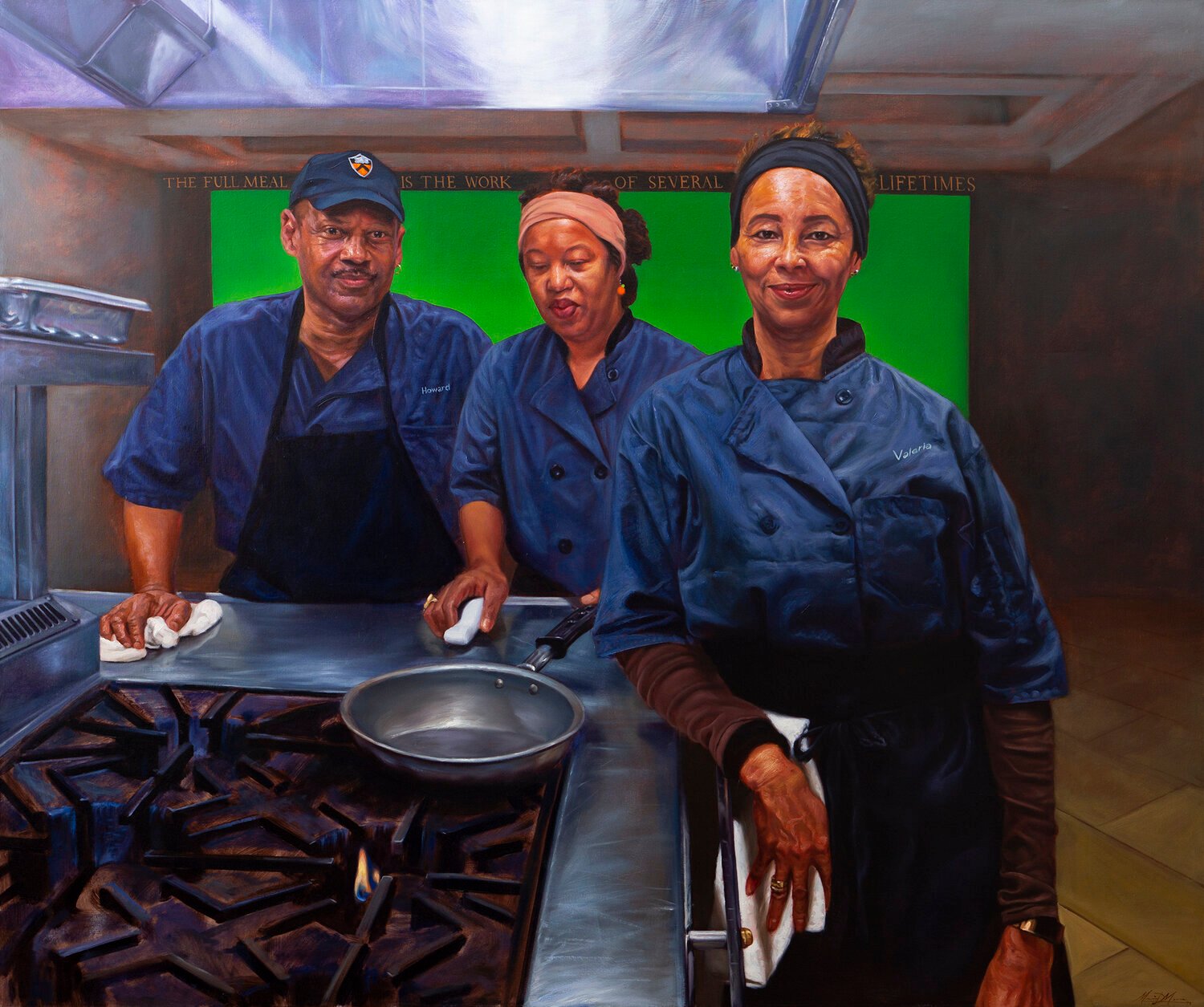
Hanging on the walls of most university buildings are portraits of aged white men—deans, donors, and illustrious alumni. But at Princeton right now, you’re more likely see portraits of the people who do the daily work of actually running the place: the cooks, cleaners, and security guards.
These are the works of Mario Moore, a 32-year-old Detroit-born artist who recently painted a series of portraits honoring the African American service workers on the Princeton campus, where he has just completed a year-long fellowship. The project was inspired by Moore’s father, a former security guard at the Detroit Institute of Arts who had a “hard-working, industrial belt-type of mentality,” according to Moore.
In fact, Moore portrayed another security guard for his 2019 portrait The Center of Creation (Michael), which shows the man inviting visitors into Princeton’s University Art Museum through an open elevator door. It was one of several of Moore’s works to be acquired by the same museum for its permanent collection.
“The museum bought that piece, and Michael works there,” the artist tells Artnet News. “He’s going to be guarding his own painting!”
Mario Moore. Photo: Khary Mason, courtesy of the artist.
Moore arrived on campus late in the summer of 2018. One of the first people he met was Clyde, who worked in the facilities department at Princeton’s Lewis Center for the Arts, an encounter that led to Clyde Sky High, Moore’s first painting in the series.
“I just saw him walking by and I was like, ‘Hey, do you know where I can get my hair cut?’” he recalled, noting the difficulty of finding a black barbershop in the suburbs of New Jersey. They struck up a conversation, then set a time to meet again later, at which point Moore started sketching Clyde in a notepad.
This is how it went for all the portraits: a chance meeting or introduction would give way to longer sit-down conversations about life, then Moore would make a photo or drawing of his subjects for reference and get to work. Throughout the painting process, he would invite his subjects to weigh in on the piece. Often, they became friends.
Mario Moore, The Center of Creation (Michael) (2019). Courtesy of the artist.
When Moore met Valeria, a cook who’s worked for over 40 years at the school, he learned that her favorite hobby was to wash and wax her car. The resulting portrait, one of the best of the bunch, features her in the parking lot of a verdant park, leaning proudly against her red sedan. Another painting, which features her with two other cooks, will be installed in the Rocky-Mathey dining hall where they all work.
“Thinking about representation and how black people are depicted in films and images through service roles—I didn’t want to perpetuate that as being normative,” says Moore. “I was like, ‘How do I reconcile that while honoring the honesty of hard-working people who pay the bills this way?’”
That’s why there are no other people depicted the background of the paintings, he says. “I didn’t want the figures to seem like they’re serving someone else.”
Mario Moore, Clyde Sky High (2019). Courtesy of the artist.
Last September, after Moore’s residency ended, the Lewis Center mounted a solo show of his portraits at Princeton. At the opening, he staged a performance wherein several singers were dressed up as security guards. One of the performers, who is also an artist, told Moore about his experience in costume that night: “Before he sang, people would walk past him and never say anything,” Moore said. “Some handed him trash to throw away.”
“At the end of the performance, they walked up to the singer and apologized.”